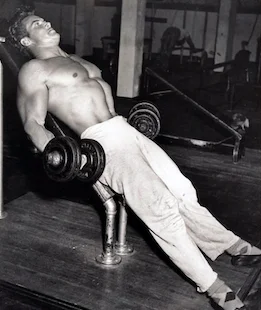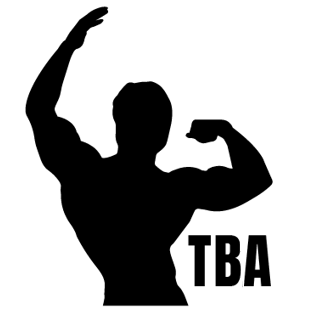Training every muscle group in one workout was popular during the Silver Era. Steve Reeves would train for up to three hours a session to ensure he targeted every muscle. Gironda & Eiferman also favored the full-body routine. Over the years this way of training lost popularity. Bodybuilders moved to the push-pull-legs routine and more recently on to body-part splits. Despite falling out of popularity, the full-body training split has a number of benefits.
Flexibility
The full-body routine is the most flexible. This routine suits anybody with an inconsistent routine who can’t commit to a set number of training days per week. As you train every muscle group in each workout, it doesn’t matter if you miss sessions or train less one week. The program generally works best split over three days; training one day on and one day off.
Push-pull-legs and body-part routines are more structured. You have to commit to a set number of days or muscle groups go untrained. This will cause muscle imbalances and a physique that lacks symmetry.
Frequency
A lot of research has gone into muscle growth and training frequency. The evidence suggests that natural lifters should aim to train each muscle group two to three times a week. It’s better to train with less volume per session but more frequently. This aligns perfectly with full-body routines.
If you follow one of the other routines you will likely train each muscle group just once per week. If you’re natural, this probably isn’t the best approach. This explains why early bodybuilders favored the full-body routine, before the introduction of steroids.
Priority
The full-body program allows you to adapt the workout depending on your own physique goals. You can prioritise lagging muscle groups and add volume to the workout. Train lagging muscle parts at the start of the workout when you’re fresh. The order in which you program your training is important. See how Steve Reeves structured his workouts here.

Competing
If you’re very conditioned and training for a competition, the full-body approach might not be optimal. If you’re training to hit the stage, you are likely putting in 5 or more sessions a week. If you train full-body with such high frequency, you’ll put a tremendous amount of strain on your central nervous system and risk injury or sickness, as you won’t recover in time.
The second reason is the mind-muscle connection. Training body part splits helps build a mind-muscle connection as you are focused on activating one particular muscle group. This comes in handy when you practice posing for the stage, which requires an exceptional mind-muscle connection.
Accountability
If you’re the guy who skips leg day, skip the full-body routine as well. The major problem with full-body training is accountability. You have to put equal care and attention into each muscle group, and make sure you’re not neglecting one area.
Everybody has certain body parts they hate training, but you have to do it. If you’re going to smash your upper body every workout and throw in a couple of leg extensions at the end, you’re better off putting aside a full session for your legs. If this is you, try a PPL split instead.
Programming
As with the PPL routine, training full body splits requires proper programming. If you’re following a body part split it’s easy to take each session as it comes, and focus just on that muscle group. However, with full-body training, you need to make sure no muscle groups are being neglected and that you’re incorporating the right lifts for your goals.


